The United Kingdom is a land of canals and waterways, and narrowboats are right at home on these placid waters.
The “narrow boat” refers to the original working boats built in the 18th, 19th, and 20th centuries for carrying goods on the narrow canals. The term is extended to modern “narrowboats” used for recreation and occasionally as homes.
The key distinguishing feature of a narrowboat is its width: it must be no more than 7 feet (2.13 m) wide to navigate the narrow canals. Modern boats are usually 6 ft 10 in (2.08 m) wide to guarantee easy passage everywhere. Because of their slenderness, some narrowboats seem very long. The maximum length is about 72 feet (about 22m), the length of the locks on the narrow canals. However, modern narrowboats tend to be shorter than this, so that they can cruise anywhere on the connected network of British canals.
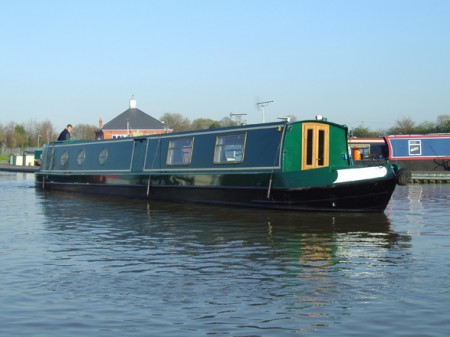
Modern narrowboats are used for annual holidays, weekend breaks or as permanent residences. Usually, they have steel hulls and a steel superstructure, but they can also be made of fiberglass or timber. They are usually powered by modern diesel engines. There will be at least 6 feet (1.8 m) of internal headroom, and similar domestic facilities as a small landward home: central heating, flush toilets, shower or even bath, four burner stove, oven, grill, microwave oven, refrigerator, satellite television and mobile phones. Externally, many narrowboat owners will brighten up the linear shape with bright paint, designs or crests.
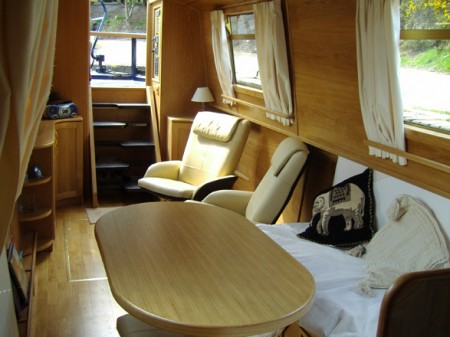
They can be owned by individuals or groups, rented out by travelers, or used as cruising hotels. A few boats are lived on permanently, either based in one place (though long-term moorings for residential narrowboats are currently very difficult to find) or continuously moving around the network (perhaps with a fixed location for the coldest months, when many stretches of canal are closed by repair works or “stoppages”).
On most narrowboats steering is by tiller, and the steerer stands at the stern of the boat, aft of where a person emerges from the hatchway and rear doors at the top of the steps up from the cabin. The roof of the narrowboat is usually used for lounging or storage space.
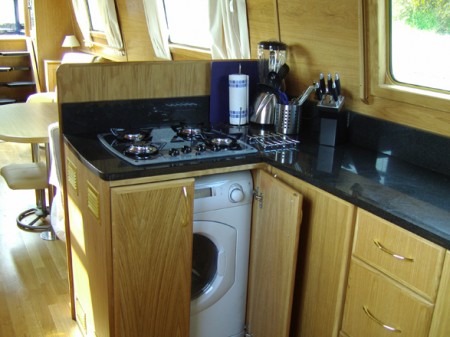
Just like anything that is in or near the water, upkeep is constant. Many narrowboat owners need to be familiar with engine and hull repair. Also, because of the small size and it being a floating home, clutter and excess stuff has no place on a narrowboat. In fact, there is quite a funny video about a very messy narrowboat and how the ladies from How Clean is Your House? make it shipshape.
We would love to hear from our readers in the UK about their experiences with narrowboats, if you live on one, even better!
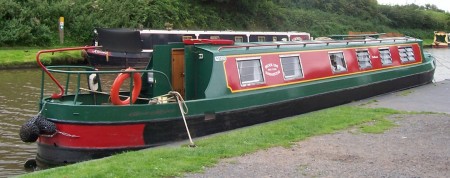
Our Day on the Narrowboat Charlie
National Association of Boat Owners-UK
If you enjoyed this post, subscribe to our feed

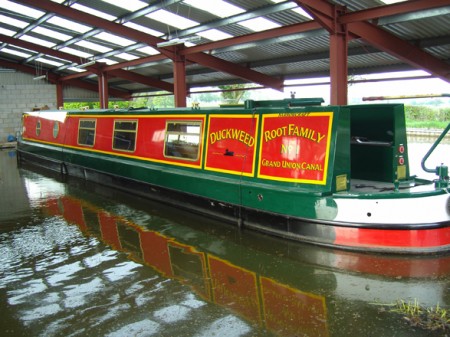
WOW beautiful! It’s really amazing to see how luxurious the interior is too, and all within a 7-foot width.
This was amazing! I hope the family on the boat keeps it clean. These narrowboats are like motor homes on water – looks like a nice, carefree lifestyle!
Wow, I had no idea narrowboats could be so beautiful! What a wonderful article; thanks so much for posting!
Totally gorgeous! It’s like a complete home in a seven foot width
I wonder if it really is as carefree and comfy a lifestyle as it looks? I work at Big Yellow Storage (http://bigyellow.co.uk )and it seems to me that people (especially those who have made the move from a house) who live on houseboats are definitely in need of good storage solutions. Any hints and tips on self storage solutions for when you move home? Dead interested in seeing what people in this lifestyle come back with. (btw, if you *do* want some self storage for moving home let me know, I can get a 25% discount!)
these narrow boats were towed by horses before the days of diesel engines. There are still some horse towed boats on the British canals, some private and some for holiday hire
These are awesome; I’ve always dreamed of floating home. (Given I work in construction, it would be nice to be around somewhere without as deep foundations!)
Rope makers appear to enjoys confusing us with science and/or extraordinary polysyllabic names.
Alright try to cut through the guff somewhat.
Dyneema
Also known as Spectra – this is a high modulus polyethylene fibre.
T
Polyester
Recognized as Terylene or Dacron, polyester is the stuff and most rope and line is
made of. It is resistant to rot and ultra-violet (UV), sinks
in water and comes in a number of constructions: